Mixed-method research uses qualitative research and data analysis in a study. Sometimes quantitative method can also be added. The best way is to have user researchers and data analysts working together in a project.
Glints launched two services. One was employer to talent chat, the other was talent to talent chat. However, the performance of the product after launch was not as good as expected. The goal was to find product-market-fit for this feature.
Main questions:
- Which function should we develop first?
- What is the main JTBD for this function?
- What can be done to substantially increase the activation rate?
-Used data and qualitative studies to quickly define the product development direction and understand the development priority
-Understand how to improve the activation rate.
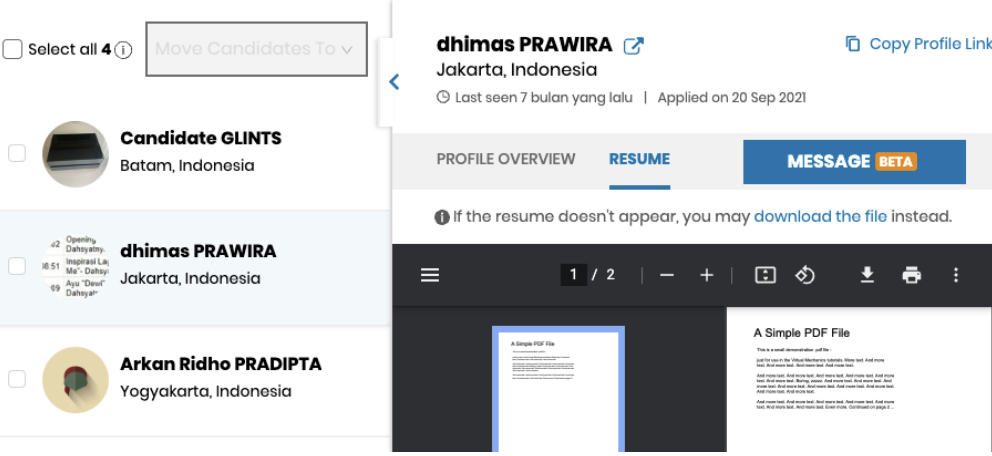
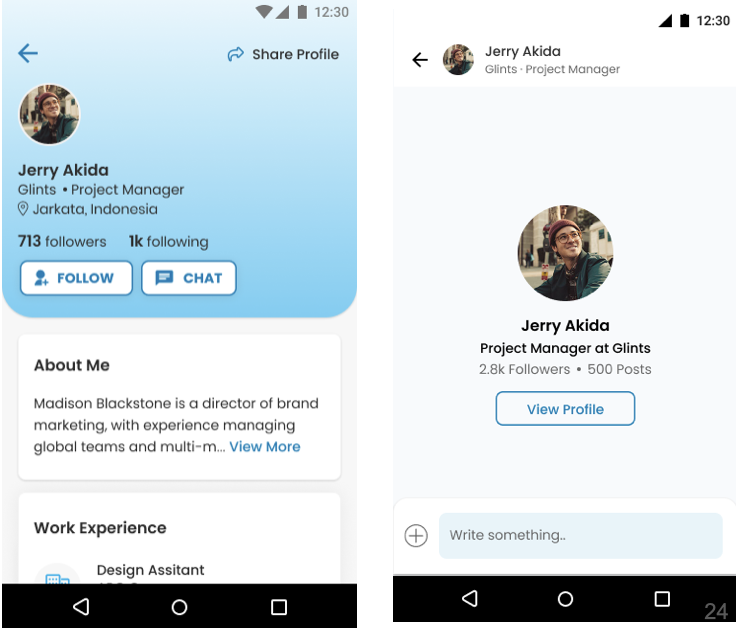
1. The data found that only employers to talent chat had a higher than expected activation rate during the trial period, but more than 70% of the messages from the employer did not get response.
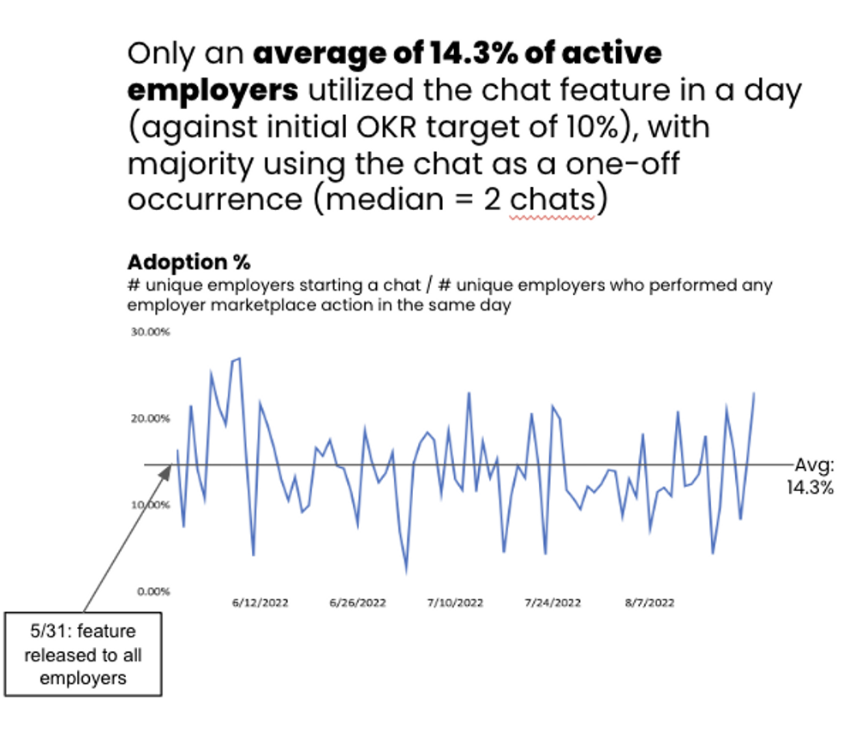
2. It is proved by the data that Chat is really helpful to improve the short-list rate. Employers who used Chat added more job seekers to follow-up interviews within 14 days.
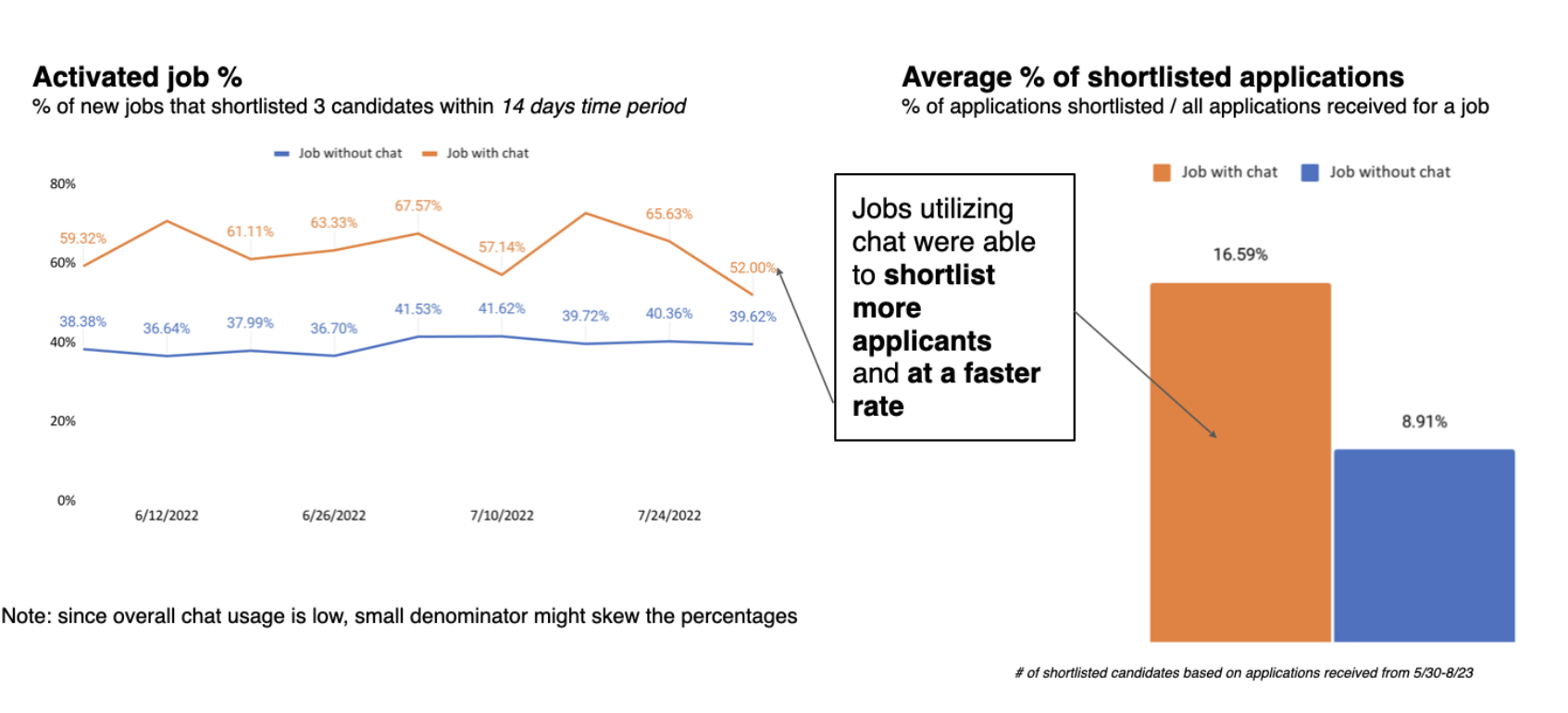
3. Talent <> Talent Chat activation rate was low。
4. Users think chatting with other users for help or building relationships was not their JTBD when using Glints as a career/job platform. They prefered to use these platforms solely for job hunting purposes. Therefore, they were more willing to chat with employers than other talents.
"Glints a platform to find job opportunities and webinars. If I were to interact with other users, I feel it was unsuitable for the purpose of the app." ... Adhi, 5 YoE, passive talent.
1. Employers mostly used Chat to Find Young Talents.
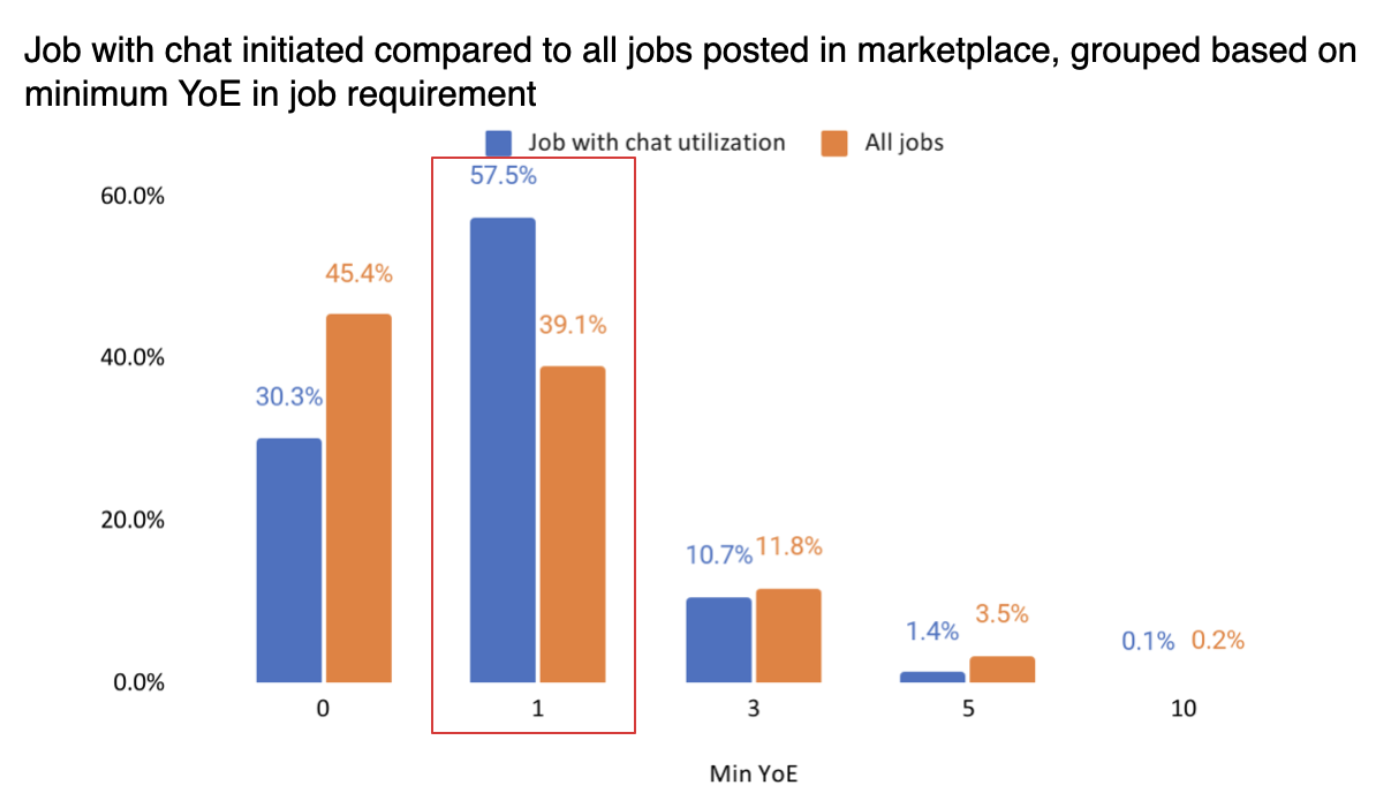
2. Finding a job is the main JTBD for Talents.
There were three main usage: Finding a job, building relationship, and asking for help. Through data, we knew finding a job as the main JTBD.
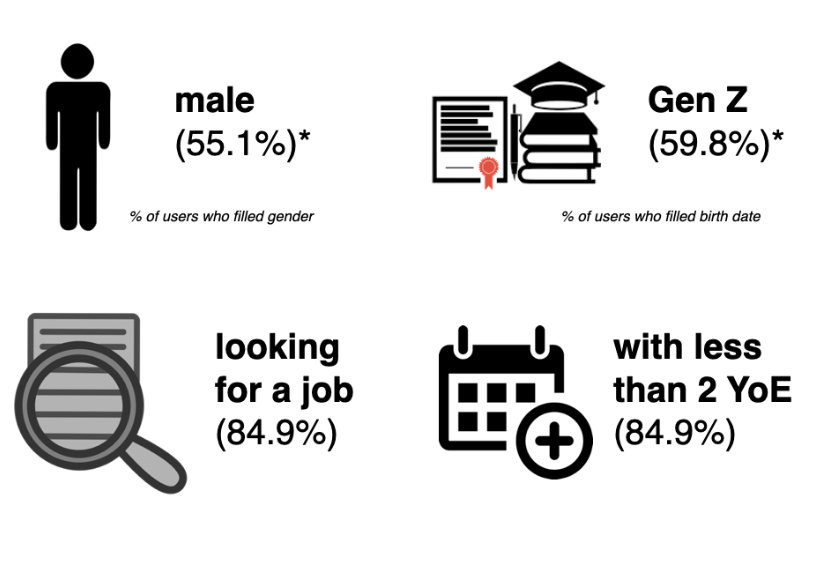
1.We found if employers knew how the function worked and how much efficiency the feature could improve, they would be more willing to use the feature.
"I didn't think I have used the chat right now because I don't know how to use it and how fast the response from the candidate."
...Vania, HR Executive
2.Qualitative research had found that the reason for the low response rate from talent to employer was that most job seekers were not aware of this function, and not all of them had installed mobile applications, so many messages stayed in job seekers' emails.
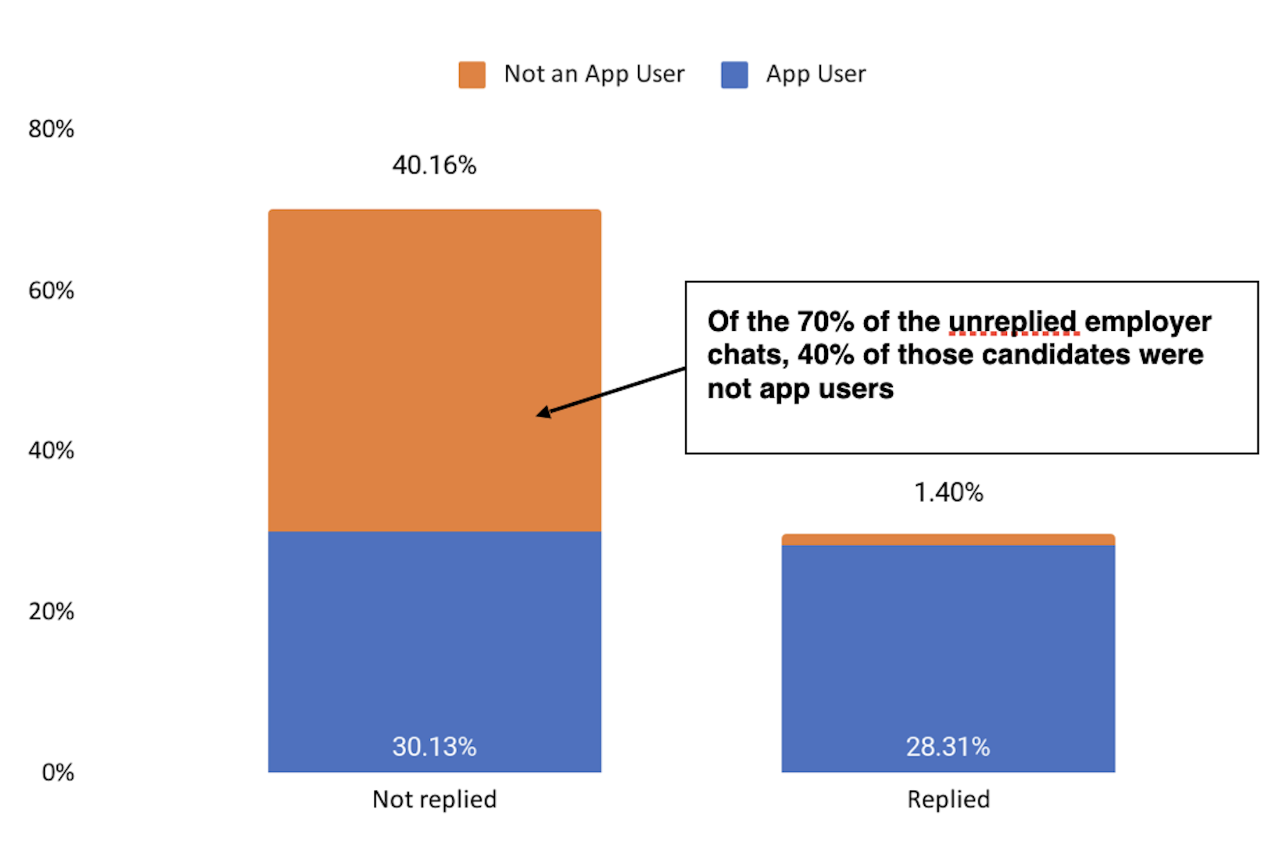
3. We also found how to encourage talents to seek help from others.
Through mixed methods research we can clearly answer the questions:
- Which function should we develop first? -> employer to talent
- What is the main JTBD for this function? -> Finding jobs
- What can be done to substantially increase the activation rate? -> A better onboarding process
We quickly defined the development directions and got the leadership team's support. Then we continued the improvement process with the scrum team.
